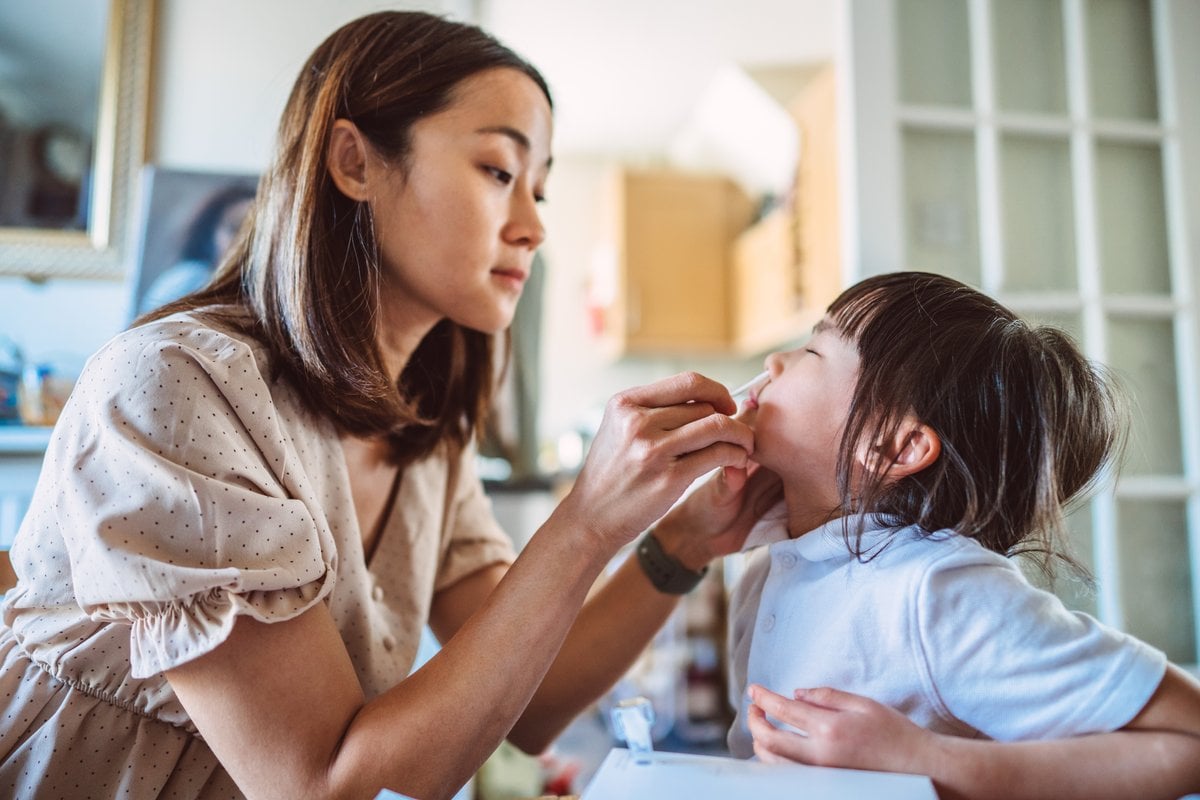
Margie Danchin, Murdoch Children's Research Institute
Many parents across Australia will be COVID testing their kids at home using rapid antigen tests (RATs), as school returns across many states next week.
The Victorian and New South Wales governments strongly recommend twice-weekly testing of school students and staff.
This may be challenging for many parents, especially if their child has developmental or behavioural difficulties.
So, how can you safely perform a RAT on your child at home and help them to engage in the process?
Here's how to use an at-home rapid antigen test. Post continues below.
Preparing for the test.
As with vaccination, the key to performing the test successfully is preparing the child well and explaining what will happen, to give them some control over the situation and to minimise anxiety.
Sit down and talk with your child and explain:
-
They will need to do a RAT in the morning twice a week (if in Victoria or NSW). It won't be forever, but will be needed for the first four weeks of school, at least.
-
They can go to school if the test is negative.
-
And that all their friends will be doing it as well.
It doesn’t need to be scary or painful. With the right technique, you’ll be able to perform this test quickly and safely at home, or allow your child to do it themselves if they can.
In general, give yourself about 20 minutes, and remember not to rush the process the first few times you do it with your child.

Top Comments